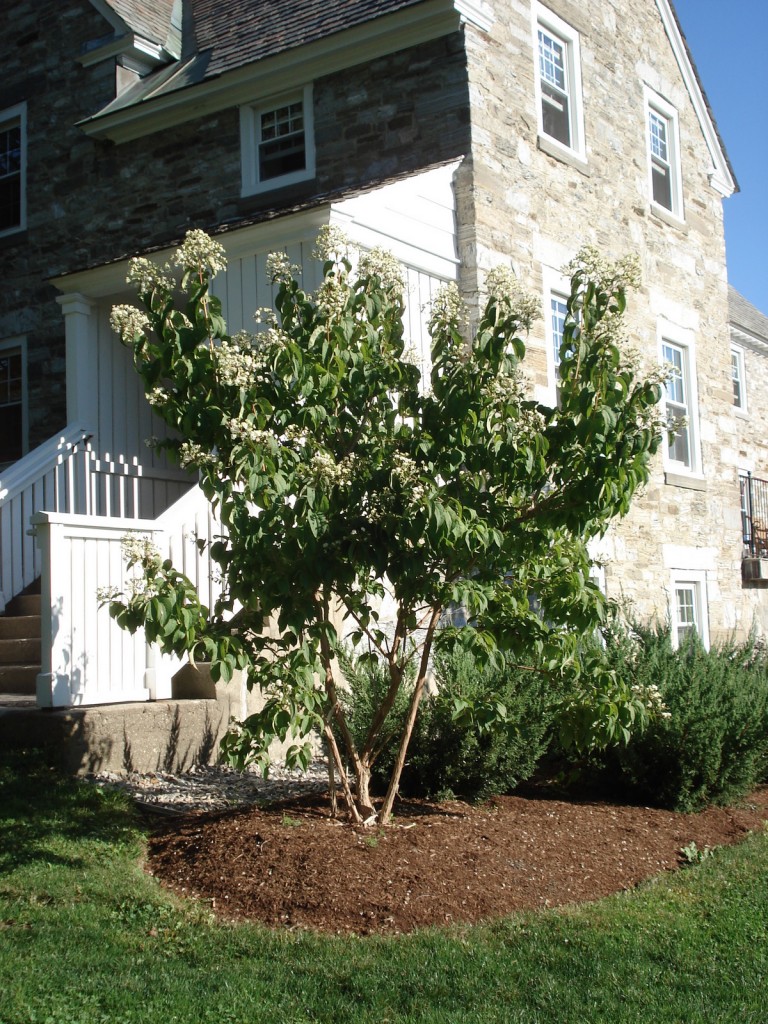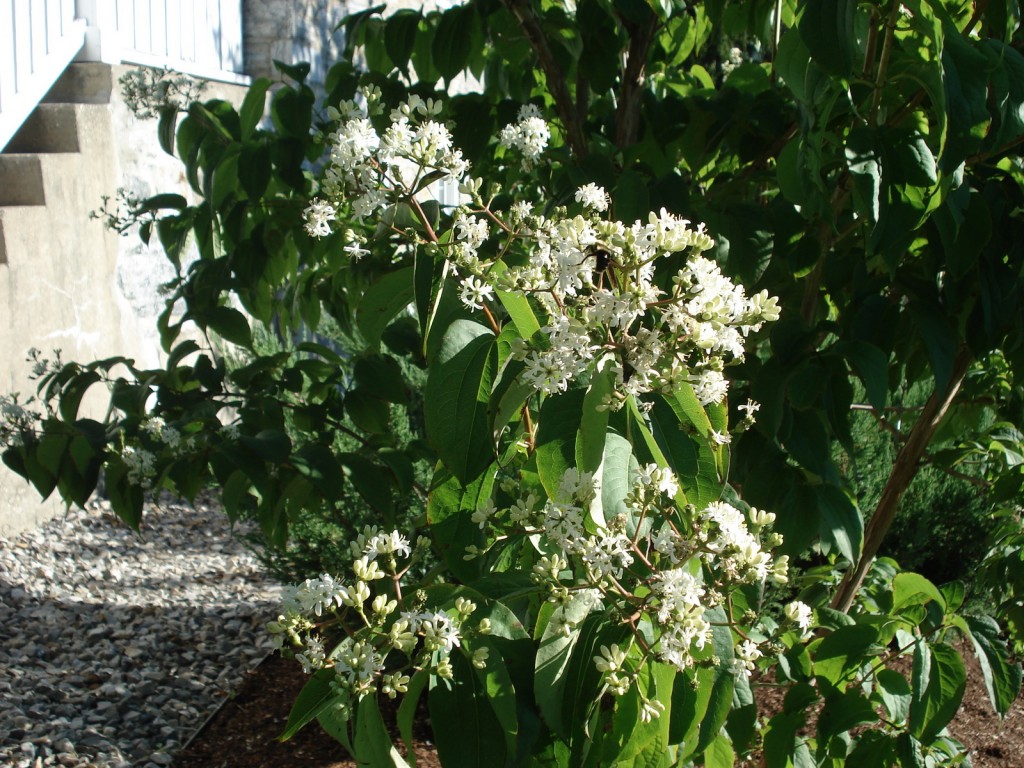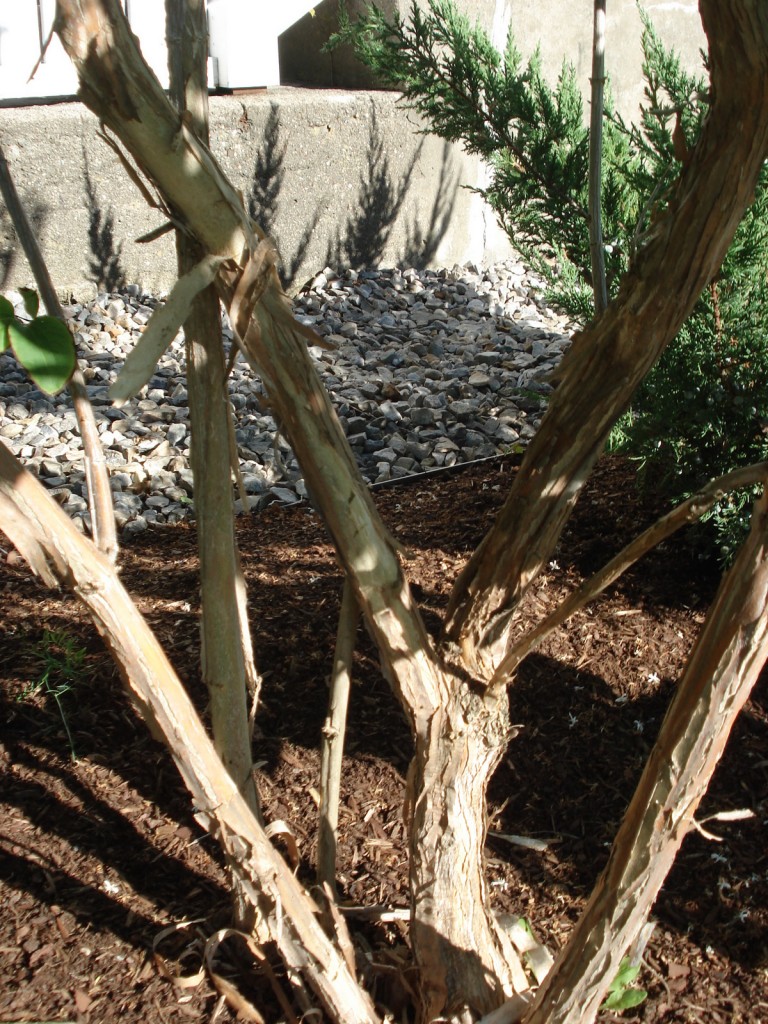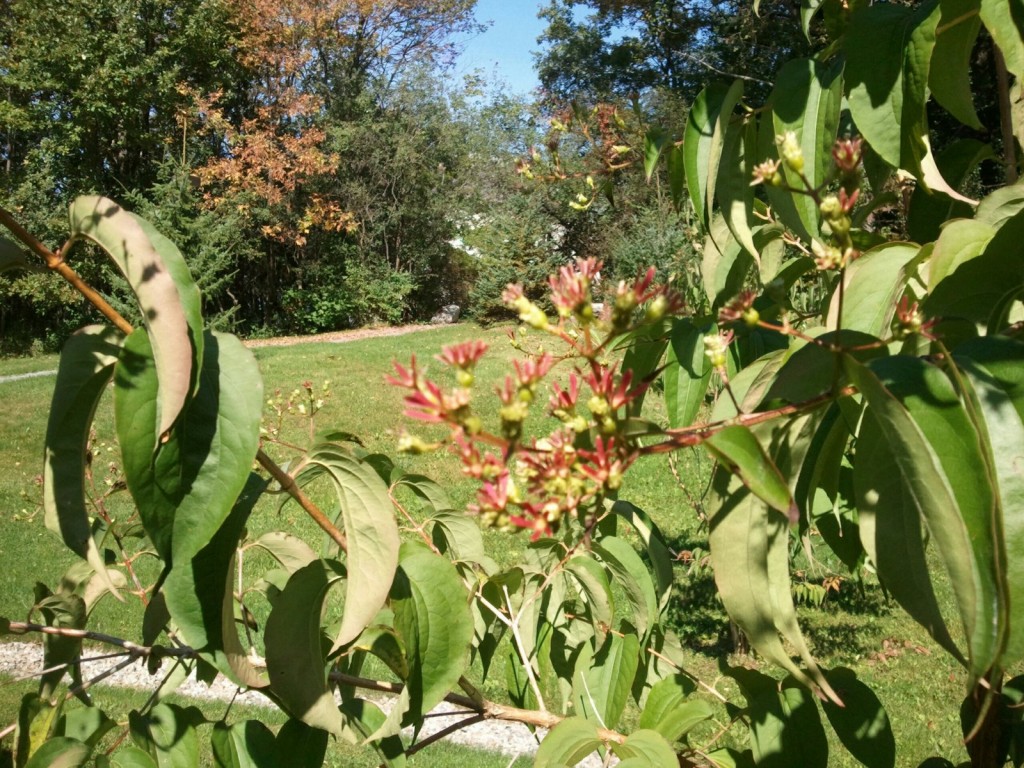I don’t know if I’m a lazy, slothful gardener, or just a brutally honest one, but either way I’m hoping for a hard frost pretty soon. I’m tired. My garden is tired. A good significant freeze, a cleaning of the summer slate, an official change of the seasons, that’s what I need.
Given my perennial neglect, fall flowers always hold a soft spot for me. Anything that can brighten the garden in September is a bonus. Take Asters, rising up above the weeds of late summer. Sure, go ahead and curse the Aster yellows causing the lower leaves to fall away all summer, making the plant look ridiculous, but the bright pinks and blues as a surprising upper tier to the late garden redeem almost any neglected space. Grasses hold their own all season, but shine in the fall as vertical accents even as other plants droop and hunch like my sore autumn back.Trees and shrubs, though, are truly a lazy gardener’s friend. For a minimum of work, they blossom and grow dependably. In the plant world, it’s like something for nothing.

Seven Son Flower, Heptacodium minicoides, is a recent introduction into the plant world. Originally discovered by the famous plant explorer E.H. Wilson in 1907, at Hsing-shan in western Hubei province in China. Found on cliffs about 3000 feet above sea level, only one seed was found, so dry specimens were collected and brought to an herbarium. Another expedition found the plant in the Hangzhou Botanical Garden in 1980, and two seed collections were made from a single plant and distributed to various arboretums. Most active in spreading the plant around was the Arnold Arboretum in Massachusetts. (Read the complete history ) As far as I can tell in my reading, all plants in the trade trace back to that single plant.
Seven Son flower gets its name from the seven headed inflorescences on the flower cluster. The white flowers wouldn’t draw much attention in the spring, as they honestly don’t hold a candle to a lilac. In September, though, they draw the eye through the tired landscape, showing off against the pale tattered leaves of most trees and shrubs in the late summer.

The plant seems to grow somewhere between 10-20′ high, and about 10-12′ tall. It’s one of those gangly plants that defy the easy tree/shrub category, although the finest specimens seem to be pruned into attractive multi-stemmed small trees. The advantage to this little bit of work is the ability to show off the bark, which peels in long strips in alternating cinnamon and light brown shades. The leaves hold opposite each other along the stem (showing off its familial relation to Honeysuckles, the Caprifoliaceae) and stay dark green, pest and disease free all season. Some books claim no fall color, but we seem to get a dependable, but not stunning, gold.

Further south, once the flowers fall, the calyxes stay attached, and while the seeds are forming, turn bright red, looking like a second bloom on the plant. Honestly, I’ve never noticed this in Vermont, and the book Landscape Plants of Vermont states that the the season ends too soon for this Cape Myrtle effect, but I’ve managed to photograph some last week, and I’m watching.

For the observant, there is one planted near Painter Hall, just off of Old Chapel road, pruned to a single trunk. Other clump forms are on the south side of Munford, the east side of Pearson Hall, and a couple other places I’m forgetting. Heptacodium seems to do best in full sun, but is at least partially shade tolerant as well.
